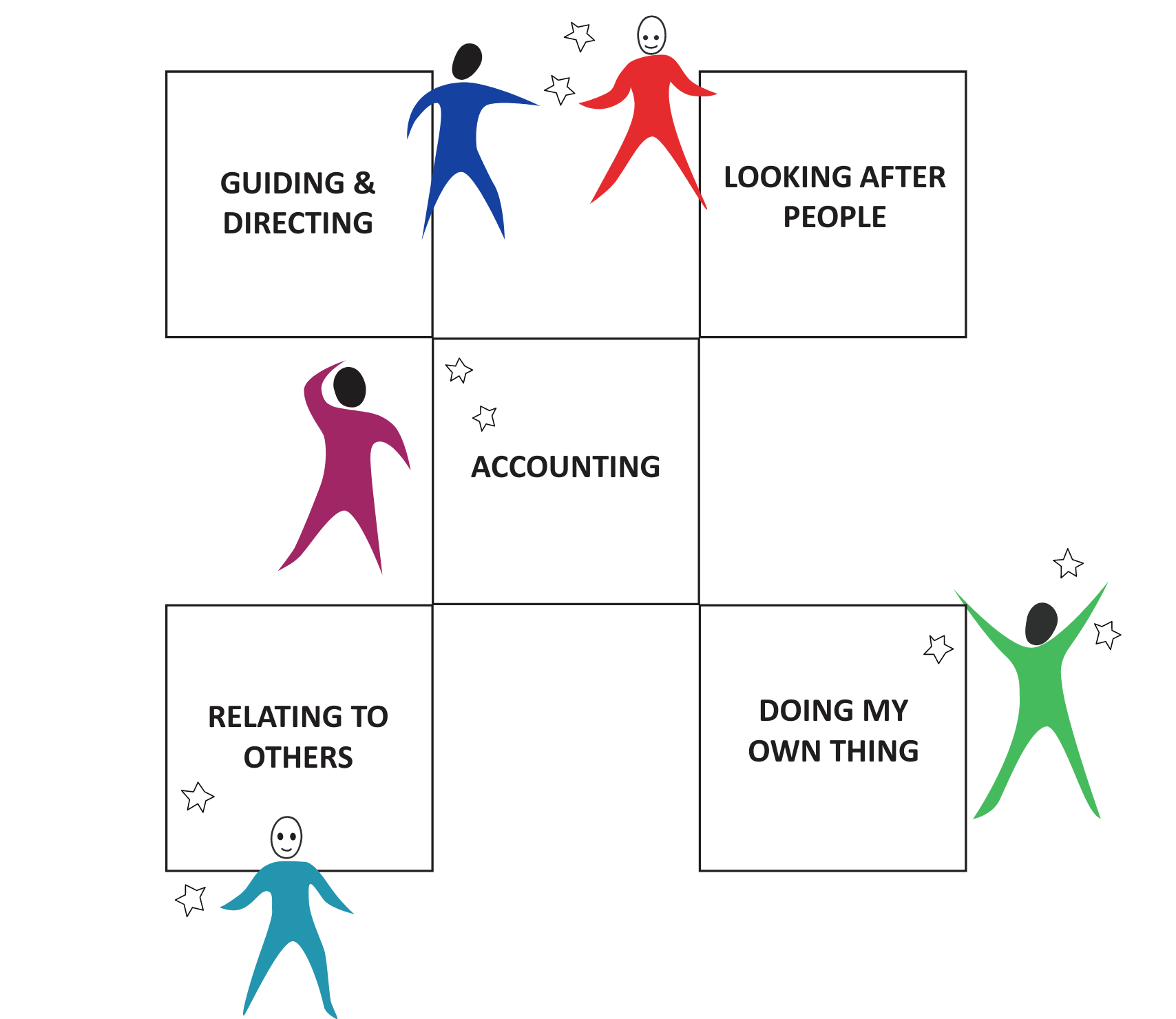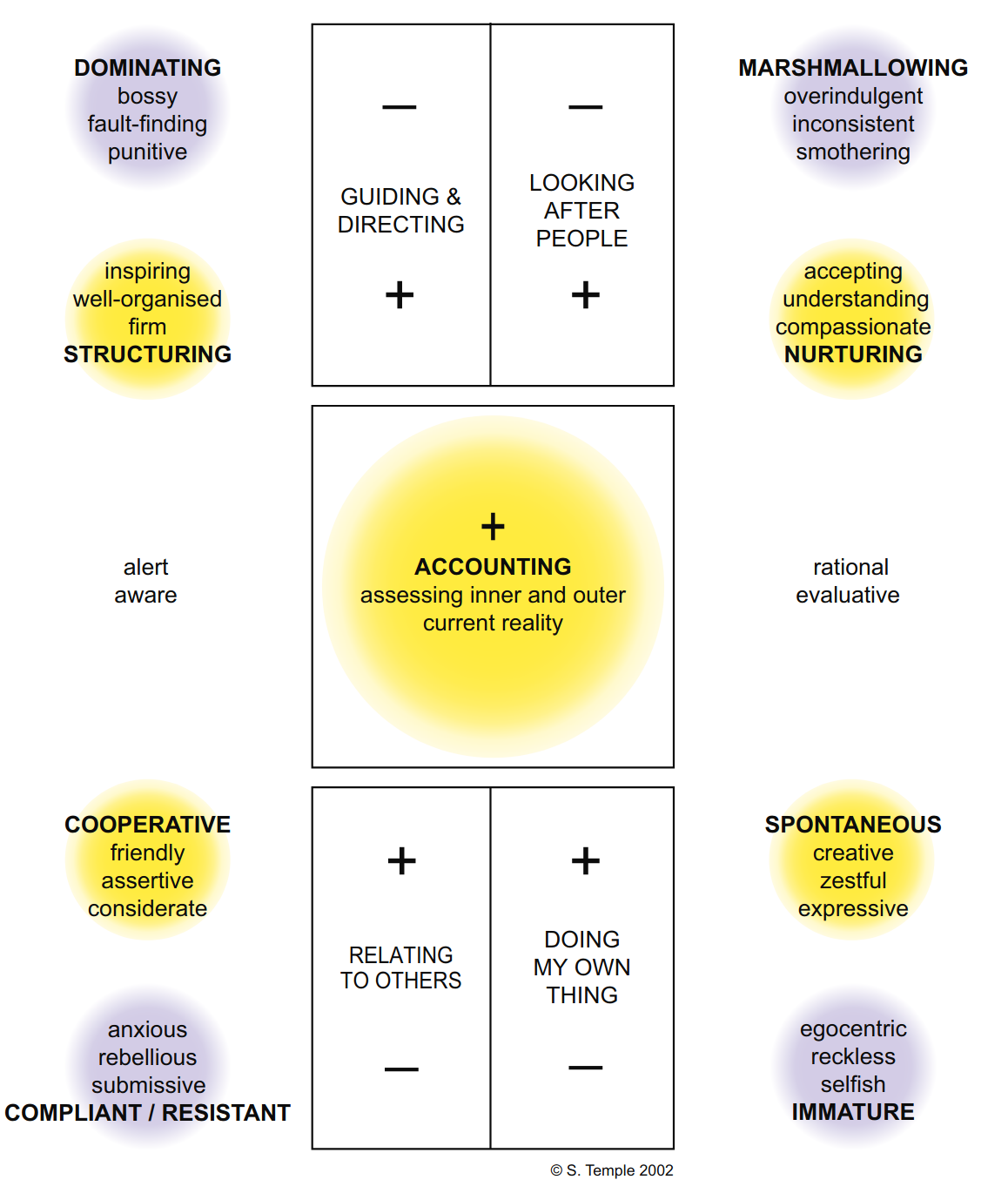Functional Fluency
In the past twenty years Susannah Temple has developed a model of behaviour ‘modes’ which offer a very useful way of framing relationships in working with students, young people and families. Temple uses the phrase, ‘functional fluency’, for a range of behaviours which tend to be associated with when we are at our best. These behaviours can be associated with the functional ego state model and contribute to what she refers to as the Integrating Adult. Susannah was given the Eric Berne Memorial Award for her work, which was also the basis of her doctorate research.
In these pages you will find a series of diagrams and graphics that illustrate the functional fluency framework. For more information about how this works, as well as the profiling tool that is based on the model, please check out the Fluent Self website. A fuller account of the functional fluency model in booklet form can be downloaded here.

The Full Functional Fluency Model
The corner elements each have a positive and a negative mode. The positive modes are the effective ways of using the elements. Using Accounting Mode helps you choose the positive modes to good effect so that your behaviour is functionally fluent. This is how you communicate well. If you are human, however, on a bad day, you will occasionally slip into using the negative modes, and that is when old habits can trip you up and you react rather than respond, which is often counter-productive! The diagram below further details how the functional fluency model appears in 'real life’. If you click on each component the pop-up window gives a more detailed description of the mode of behaviour. The lower diagram presents a simpler version which might be printed and used as a hard copy reminder.
View a bigger version
If you prefer to listen to an explanation of the model, please listen to this two-part podcast.
Part 1
Part 2
